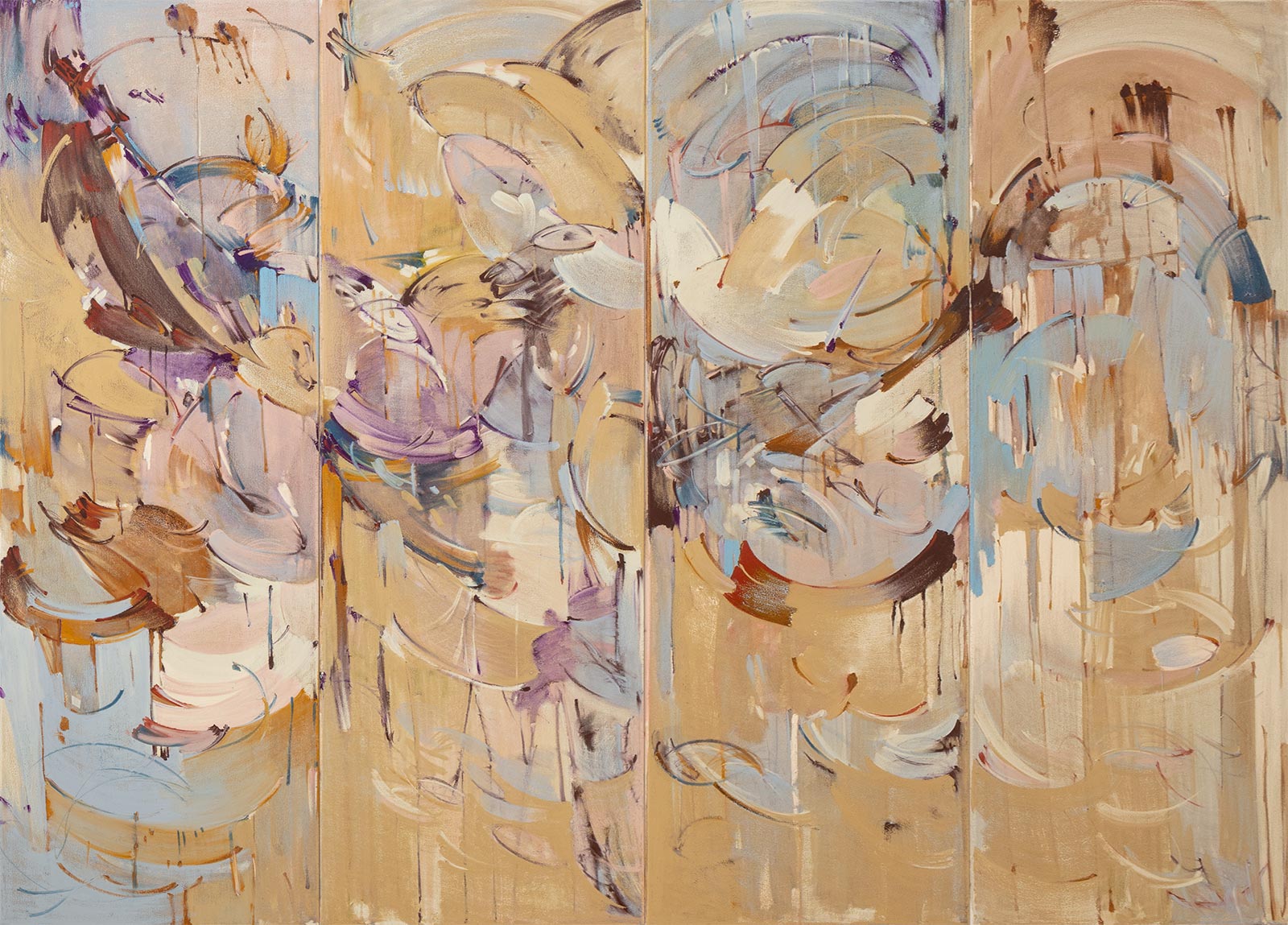
Kaifan Wang
Wading Through Water II, 2024
Oil, oil stick, acrylic on canvas
200 x 280 cm
2024
Now living in Berlin, Kaifan Wang (Chinese, born in 1996) smoothly connects traditional Asian techniques with Western art, especially gestural abstraction. Wang was trained in calligraphy from the age of six, and learned how to be in command of the movements of his hand and the brushstrokes it produces in almost a perfect manner. His abstract paintings therefore combine what seems to be contradictory at first sight: gestural expressionistic approach with control. Exposed to Chinese and Mongolian cultures, as well as Buddhist, Hare Krishna and Catholic influences, from the outset of his life, Wang was accustomed to absorbing various, sometimes conflicting standpoints simultaneously, which created a breeding ground for him as an artist with an intercultural perspective.
Each of Wang’s solo exhibitions forms a research project with a different subject, for which the artist chooses a color palette depending on his focus. Wading Through Water II (2024) belongs to the series that addresses the Dutch trading connection with China in the 17th and 18th centuries, and mutual cultural borrowings and misunderstandings. Because of this subject, Wang has given a prominent role to the colors blue and brown, which were typical for Chinese porcelain produced by the Dutch in China, to be later sold in Europe.
Wang’s paintings’ characteristic texture is made thanks to his use of the sponge. With its irregular structure, the sponge, when soaked with paint, produces thin layers of grainy smudges on the canvas, offering glimpses into other layers of color shining through underneath and creating a sense of depth. The artist discovered the sponge as his material during the COVID-19 pandemic, when his cohabitants hastily left Berlin, fearing that they would otherwise never be able to return to China. Wang stayed, and surrounded by their abandoned, useless mattresses, he slashed them open and started to cut the spongy foam into small pieces that then became his ‘brush’. Another important painting tool for Wang is the oil stick, which allows him to ‘handwrite’ on canvas, forming a direct connection with calligraphy.